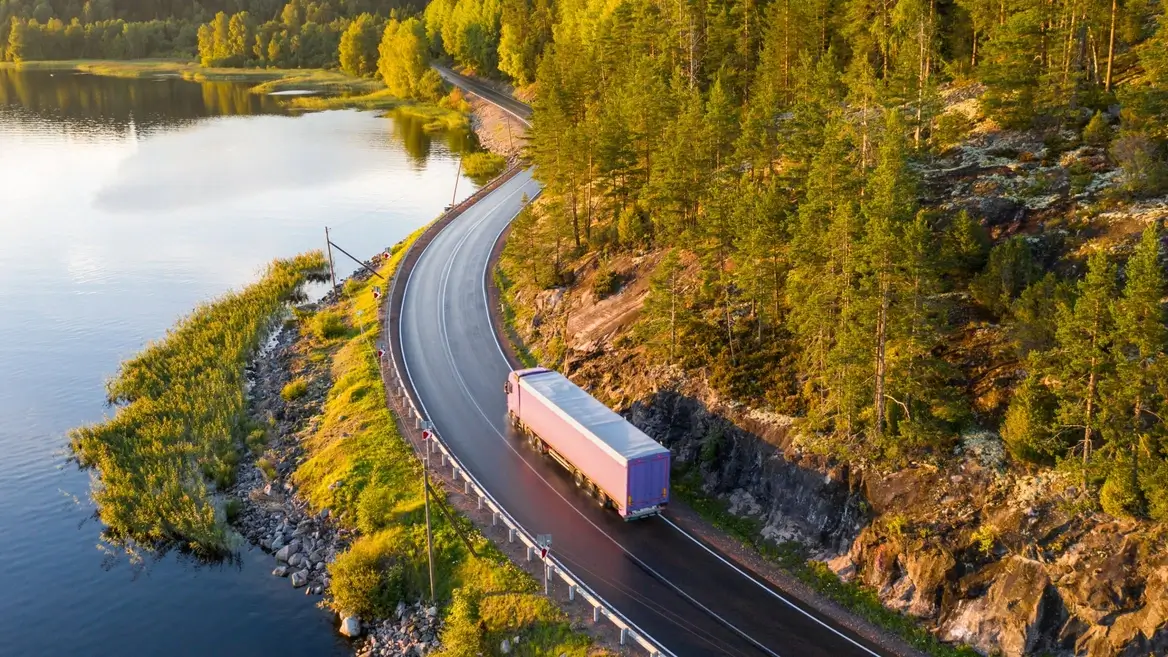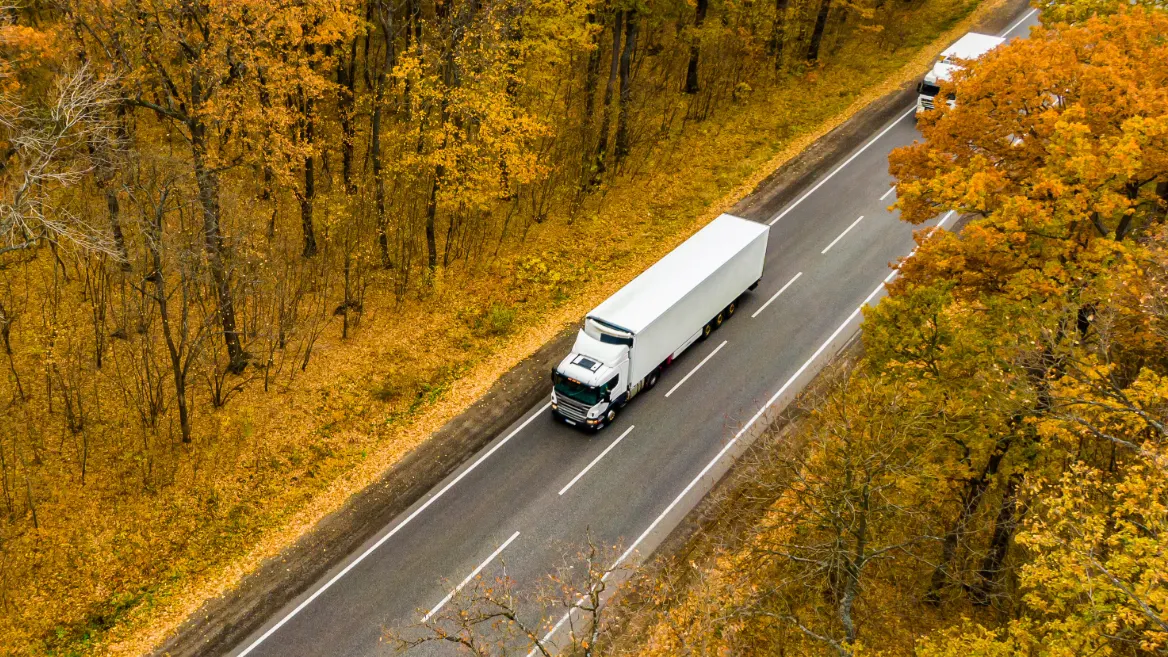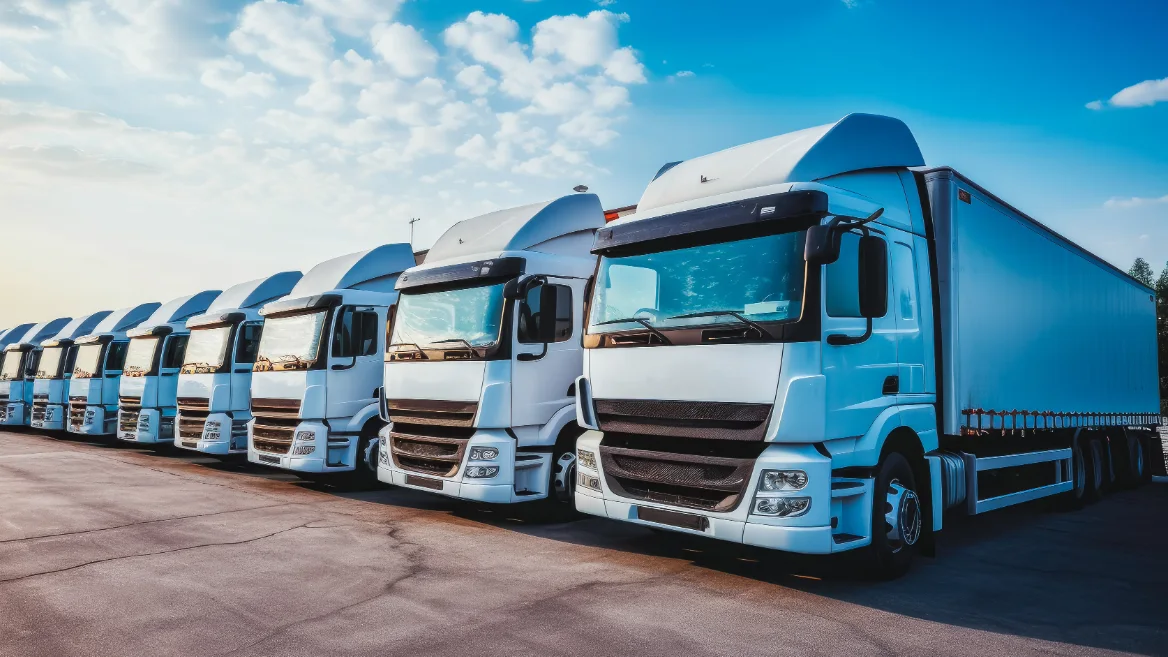Cabotage is a familiar term in aviation and maritime transport, but it also plays a major role in road haulage. For haulage companies operating between the UK and the EU, cabotage laws set limits on how foreign-registered vehicles can transport goods within another country.
Understanding these rules is important for avoiding fines and keeping operations running smoothly. Whether you’re an EU-based haulier working in the UK or a UK haulier handling loads in Europe, knowing the restrictions can help you plan trips efficiently and stay compliant.
What we’ll cover
What is cabotage?
Let’s clear this up right away: cabotage has nothing to do with cabbages or sabotage. It’s not a secret plot against haulage companies, and it won’t leave you hauling vegetables across borders by mistake.
Cabotage refers to the transport of goods within a country by a foreign-registered vehicle. In road freight, this means an HGV registered in one country carrying out deliveries in another before returning home.
Governments regulate cross-border freight movements to protect domestic hauliers and prevent foreign operators from dominating local markets. Limits on cabotage exist to keep competition fair—not to make life difficult for international hauliers (though it might feel that way at times).
Understanding the rules helps you avoid penalties and keep your operations running smoothly.
Cabotage laws in the UK and EU
Before Brexit, UK hauliers could operate across EU countries under shared rules. Now, they face more restrictions. EU hauliers working in the UK must also follow similar limits, but some rules differ.
If you’re a UK haulier, you can carry out:
- One cabotage job within seven days of delivering an international load into an EU country
- One additional job, but only if it’s cross-trade (pickup and drop-off in different EU countries, neither being the UK)
If you’re an EU haulier working in the UK, you’re allowed to complete up to two cabotage jobs within seven days after making an international delivery.
In both cases, all jobs must be completed within the legal timeframe—and breaching the rules can lead to fines, penalties, or even a temporary ban from operating in that country.
Documents required for cabotage jobs
If you’re carrying out cross-border freight jobs in the EU, your drivers must carry specific documents to stay compliant with cabotage laws. These documents prove that the job meets the legal requirements and help avoid delays or penalties at roadside inspections.
At a minimum, your driver must have paperwork that includes:
- Sender and haulier details – Name, address, and signature of both parties.
- Collection details – Location and date the goods were picked up.
- Delivery details – Destination, along with the name, address, and signature of the consignee, plus the date of delivery.
- Goods description – Type of cargo, method of packing, number of packages, and any identifying marks or numbers.
- Weight or quantity – The total gross mass or precise quantity of the goods.
- Vehicle identification – Number plates for the HGV and any trailers used.
On top of job-specific paperwork, drivers must also carry:
- Vehicle and trailer documents – Proof of vehicle registration and roadworthiness.
- Driver documents – A valid driving licence, passport (for the new Entry/Exit system) driver CPC qualification, and tachograph records.
- Posting declarations – Either digital or physical copies for each job.
- Export documents – Including an electronic consignment note (e-CMR) or traditional paper CMR insurance document.
Keeping these documents up to date and easily accessible helps avoid unnecessary hold-ups at border checks or DVSA roadside inspections. If a driver is missing anything, they risk fines, delays, or even being prevented from completing the job.
For more details on documentation and limits, check out the UK government’s guidance.

How to stay compliant and efficient
Working within cabotage laws can be challenging, but with the right approach, haulage companies and transport managers can stay compliant while keeping their fleets on the road.
1) Plan routes and loads carefully
Trip planning is an easy way to stay within cabotage limits.
Fleet managers should:
- Track allowed journeys – Use fleet management tools to log domestic trips and avoid exceeding limits.
- Prioritise high-value loads – Selecting the most profitable routes and cargo helps offset the restrictions.
- Schedule efficiently – Plan cabotage trips alongside international loads to reduce empty miles and improve efficiency.
2) Know when you’re allowed to return
EU hauliers who complete cabotage in an EU country must wait four full calendar days before using the same vehicle to do cabotage in that same country again. This “cooling-off period” is enforced to prevent cabotage from being used for ongoing domestic work.
Tracking this period carefully helps avoid compliance issues, especially if your fleet operates across multiple EU Member States.
This rule only applies to EU hauliers working within the EU. It does not apply to UK hauliers carrying out cabotage jobs after delivering loads into the EU.
3) Work with freight forwarders and logistics partners
Partnering with NVOCCs and freight forwarders provides more access to compliant loads, reducing the risk of running empty vehicles.
Freight forwarders often have better visibility of available loads and can help hauliers stay within legal limits.
Building strong relationships with these partners ensures more consistent work and optimised routes.
4) Stay informed on regulatory changes
Brexit has reshaped cabotage laws, and transport regulations continue to evolve. Staying updated on rule changes helps avoid unexpected fines or restrictions.
Haulage companies should:
- Monitor UK and EU government updates – Regulations on UK electronic travel authorisation and cross-border transport frequently change.
- Join industry networks – Haulage associations and logistics platforms provide valuable updates and best practices.
- Train drivers and staff – Keeping teams informed helps prevent unintentional rule breaches.
5) Use technology to stay compliant
Technology can simplify cabotage compliance and improve efficiency.
Carrier management systems can help fleet managers:
- Track vehicle movements – GPS and telematics ensure that domestic trips stay within legal limits.
- Automate compliance checks – Software can flag potential breaches and alert operators before issues arise.
- Find return loads – Digital freight platforms help hauliers connect with haulage companies needing subcontractors, reducing empty trips.
By following these best practices, hauliers can comply with cabotage laws while maintaining profitability and efficiency.
Proper planning, industry partnerships, and smart technology use will make it easier to work within restrictions without sacrificing your revenue.
The future of cabotage in road haulage
Cabotage laws continue to evolve, and future changes could bring more adjustments for haulage companies operating internationally. Trade agreements between the UK and the EU may impact market access, and there could be further negotiations to offer more flexibility for hauliers.
Rules around timing are also under scrutiny. For example, the seven-day period for permitted cabotage starts at 00:00 the day after the last international delivery and ends at 23:59 on the seventh day. These definitions affect how routes are scheduled and monitored, particularly around weekends and public holidays.
At the same time, sustainability targets and ways to cut HGV carbon emissions regulations could shape future cross-border freight rules. The push for greener transport and secure freight handling, including cargo operative certifications, may lead to new compliance requirements in the coming years.
For now, hauliers must work within the existing rules to stay competitive. Whether you’re a UK operator handling loads in Europe or an EU-based haulier delivering in the UK, understanding cabotage laws is key to avoiding fines and running efficiently.
By planning routes carefully, working with freight forwarders, and staying informed on regulatory changes, businesses can continue to thrive in international logistics.
Cabotage rule FAQs
How many jobs can I do under EU cabotage rules?
If you’re a UK haulier, you can carry out one cabotage job in the same EU country where you delivered the original load, and potentially one cross-trade job in a different EU country—both within seven days. EU hauliers working in the UK can do two cabotage jobs in the same timeframe.
Does the 4-day cooling-off period apply to UK hauliers under EU cabotage rules?
No. The 4-day cooling-off period only applies to EU hauliers working in EU countries other than their own. It does not apply to UK hauliers performing cabotage in the EU after an international delivery.
What documents are required under cabotage rules?
Drivers must carry documents showing load origin and destination, consignment details, vehicle and trailer registration, and export paperwork such as a CMR or e-CMR. A posting declaration must also be made before starting any cabotage work in the EU.
When does the 7-day window under cabotage rules start?
The seven-day period starts at 00:00 the day after the international load is fully delivered. All cabotage jobs must be completed by 23:59 on the seventh day, including any required unloading. Timing matters—especially around weekends and public holidays.
What happens if I break a cabotage rule?
Breaking cabotage rules can result in on-the-spot fines, vehicle seizure, or even a temporary operating ban in that country. Make sure routes are planned carefully and all documentation is correct to avoid unintentional breaches.




